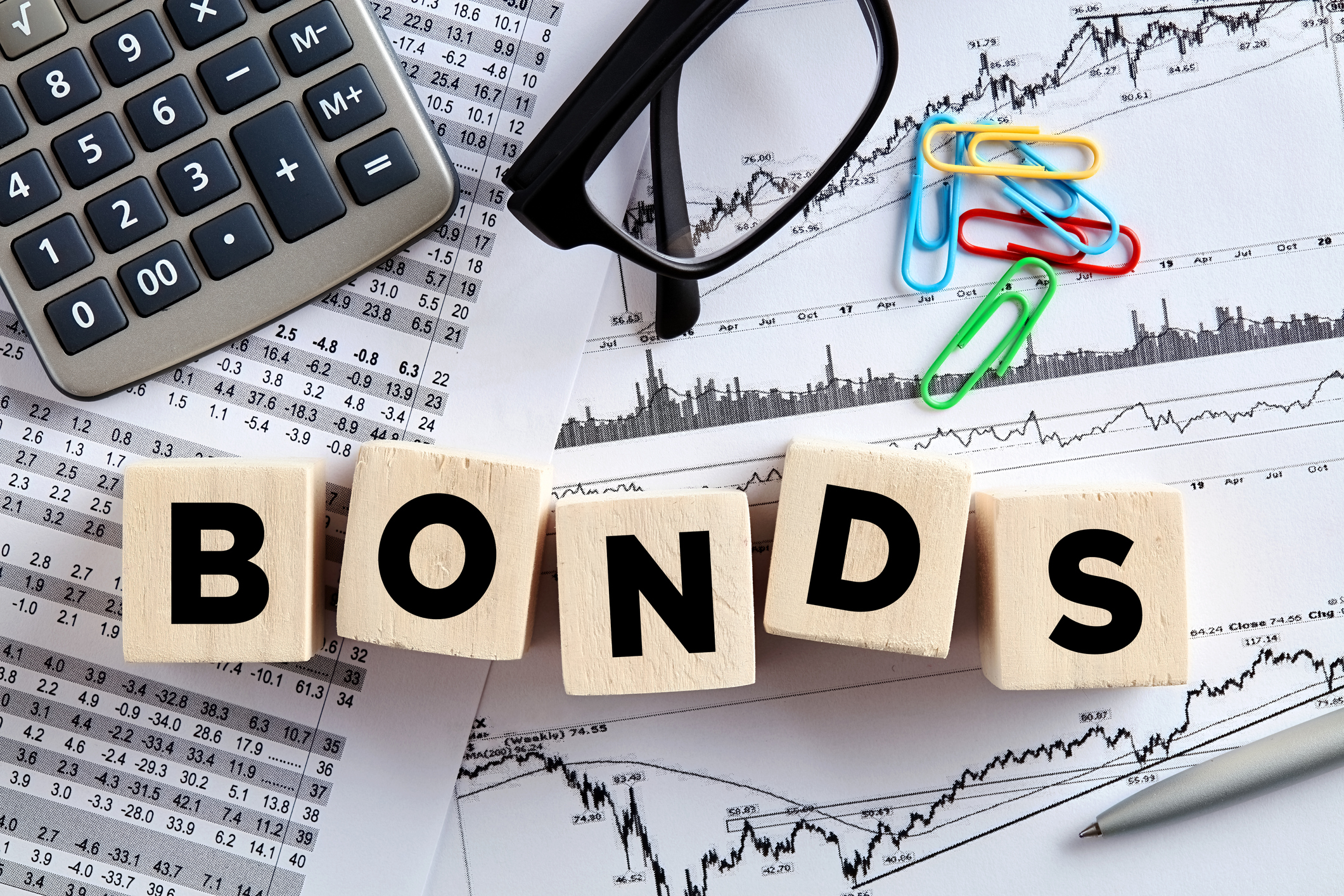
The best bond ETFs have had a rough few years, that's for sure. A rising interest-rate environment caused no shortage of disruptions to the typical investor's portfolio.
What's more, uncertainty about the Federal Reserve's monetary policy and the trajectory of inflation amid the second Trump administration's tariff war has roiled the bond market over the past few months.
There is an inverse relationship between bond funds and yields, because older (and lower-yield) bonds become less attractive as interest rates rise – and are discounted as a result. This has caused many major funds to slip in recent years.
The good news, however, is that many bond ETFs have stabilized and still offer yields that are significantly higher than the stock market even after the Fed started cutting interest rates.
And the simple fact is that bonds remain a key part of any portfolio.
"We still think high-quality bonds play a pivotal role in portfolios as they have shown to be the best diversifier to equity risk," says Lawrence Gillum, fixed-income strategist at independent broker-dealer LPL Financial.
As Gillum underscores, "And it's best to have that portfolio protection in place before it's needed."
To be clear, most investors should never give up on stocks. Over the long term, equity investments are an effective path to growing your money and every diversified portfolio should look across different asset classes.
But it has become increasingly apparent over the years that bonds are a very important asset to hold – and one that many investors may be lacking exposure in their holdings.
With that in mind, here are seven of the best bond ETFs for investors who want to diversify beyond stocks and/or to boost the income potential of their portfolio.
Each of the funds featured here has something different to offer. But they all boast low-cost fees and have generous yields based on the standard calculations of the U.S. Securities and Exchange Commission (SEC).
SEC yields reflect the interest earned after deducting fund expenses for the most recent 30-day period and are a standard measure for bond and preferred-stock funds.
Data is as of March 13.
- Fund category: Intermediate core bond
- Assets under management: $126.8 billion
- SEC yield: 4.5%
- Expenses: 0.03%, or $3 annually for every $10,000 invested
Any list of the best bond ETFs almost certainly has to include the Vanguard Total Bond Market ETF (BND, $73.13), one of the most popular Vanguard ETFs of any variety and among the 10 largest exchange-traded funds on Wall Street.
BND's approach is deceptively simple: The ETF offers diversified exposure to the bond market with an enormous portfolio of almost 18,000 investment-grade securities.
This includes debt issued by top corporations like Bank of America Corp (BAC) as well as U.S. Treasury bonds and other securities with comparatively lower risk of default.
About 50% of total assets are in government bonds, with another 26% or so in corporate debt and most of the rest in securitized bonds that focus on pools of mortgage-related assets.
If you want a portfolio of high-quality investments that covers every part of the bond market, BND is a great place to start.
Learn more about BND at the Vanguard provider site.
- Fund category: U.S. intermediate core bonds
- Assets under management: $124.7 billion
- SEC yield: 4.5%
- Expenses: 0.03%
In the interest of balance, it's worth noting that an equally strong pick for bond investors is the iShares Core U.S. Aggregate Bond ETF (AGG, $94.48).
AGG is just as affordable and just as diverse as BND, and it boasts nearly the same assets under management. But the portfolio isn't identical. AGG is a bit more focused than BND, holding "only" 12,000 or so bonds in its portfolio.
And AGG is less biased toward government bonds, with only 46% of assets of this bond ETF allocated to Treasuries. It also holds a higher percentage of securitized debt, at around 26%.
With a rock-bottom expense ratio and the same level of respectability on Wall Street, AGG is as compelling a foundational pick as BND for long-term bond ETF investors.
Learn more about AGG at the iShares provider site.
- Fund category: Global bonds
- Assets under management: $62.4 billion
- SEC yield: 3.0%
- Expenses: 0.07%
The Vanguard Total International Bond ETF (BNDX, $48.48) offers geographic diversification through a global approach to fixed-income markets.
Equally interesting is the fact that BNDX is an "ex-U.S." fund that purposefully excludes the domestic bond market, so you can layer it into your portfolio with other funds on this list with no worries of overlap.
BNDX holds nearly 7,000 individual bonds, with about 56% of its assets invested in Europe and roughly 20% in Asia-Pacific. About 7% of assets are invested in emerging-market debt and just under 5% of the portfolio is in junk bonds rated below BBB or not rated at all.
Its geographic footprint and its risk profile make BNDX a fund that can’t stand alone in most portfolios. But it still may rank as one of the best bond ETFs to buy for 2025 based on a simple and cost-effective strategy to provide an added layer of diversification to investor portfolios.
Learn more about BNDX at the Vanguard provider site.
- Fund category: U.S. short-term bonds
- Assets under management: $34.1 billion
- SEC yield: 4.3%
- Expenses: 0.03%
In the normal order of things there is a trade-off between yield and duration in the bond market. That's because the further you look to the future, the less certainty there is, thus a higher premium for investors willing to take that bet.
Sometimes, however, we will see what's called an inverted yield curve, where the opposite is true and short-term bonds yield more than longer-term bonds.
An inverted yield curve can indicate bearish sentiment, as investors expect the Fed to cut short-term rates in the future. Indeed, investors are currently re-pricing the central bank's rate cut plans, roiling the Treasury market from end to end.
Whatever the reasons for bond market volatility and potential yield-curve inversion, the Vanguard Short-Term Bond ETF (BSV, $77.97) makes the list of the best bond ETFs thanks to a low risk profile and generous yield.
With an average effective maturity of just 2.8 years, these bonds roll off fast enough that you don't have to worry as much about unexpected headlines disrupting things. And these are all investment-grade bonds, with 73% of assets in government debt.
Featuring a yield more than three times that of the S&P 500 but a much lower risk profile than a representative equity index fund, BSV is a short-term bond ETF with a lot to offer.
Learn more about BSV at the Vanguard provider site.
- Fund category: U.S. long-term bonds
- Assets under management: $5.4 billion
- SEC yield: 5.2%
- Expenses: 0.03%
The flip side of picking short-term bonds for the certainty is investing in long-term bond funds on the idea that when interest rates fall bond prices will rise and deliver principal gains even if there isn't much of a premium based on yield alone.
The reason for this dynamic is that older bonds with higher yields become more attractive to fixed-income investors when the prevailing interest-rate environment becomes less favorable.
They'll pay a premium for bonds with higher rates compared to new issues that offer lower rates.
This interest-rate risk obviously adds uncertainty to the mix. But some investors don’t mind this feature as they pursue principal gains even as they harvest yield payments.
The Vanguard Long-Term Bond ETF (BLV, $70.12) is among the most established and cost-effective long-term bond funds out there.
BLV's effective maturity is more than 22 years across the 3,100 investment-grade bonds in its portfolio. Just over half of those bonds are government-issued, so there's low risk of default.
But do consider the changing interest rate environment when you think about this long-term bond ETF and its potential role in your portfolio.
Learn more about BLV at the Vanguard provider site.
- Fund category: U.S. ultra-short-term bonds
- Assets under management: $10.6 billion
- SEC yield: 4.6%
- Expenses: 0.15%
If interest-rate risk is a major concern for you, consider the PGIM Ultra Short Bond ETF (PULS, $49.61), the largest ultra-short-term bond fund out there.
With an effective maturity of just 1.3 years and an average credit rating of AA-, the only real risk with PULS is a "black swan" event that results in unexpected and dramatic changes for potential default events and/or the federal funds rate.
And, let's face it, if something like that happens without warning in the first few months of 2025, there will be few safe places to hide your money.
PULS is not designed to grow your principal, as share values are typically rock-solid and don't move much. Given the short duration of the bonds in this fund, it’s natural to expect the yield to change more quickly than other funds as holdings roll off and are replaced with new issues.
It also has a smaller portfolio, just under 500 bonds, simply because there aren’t as many active securities in this space compared with long-duration bonds that trade for many years rather than just several months.
That said, if you're looking for a significant current payday with a low risk profile, PGIM Ultra Short Bond ETF is a worthy choice.
Learn more about PULS at the PGIM provider site.
- Fund category: U.S. intermediate bonds
- Assets under management: $18.1 billion
- SEC yield: 4.8%
- Expenses: 0.36%
If you're having trouble slicing and dicing the bond market and finding the right vehicle for you, take a step back. Don't overthink this.
Actively managed funds like the Fidelity Total Bond ETF (FBND, $45.59), a member of the Kip ETF 20 list of our favorite cheap ETFs, provide exposure to the bond market with a tactical approach that favors what's working right now.
If Vanguard is best known for its low-cost approach to index funds, Fidelity has made a name for itself by taking a hands-on approach, earning a reputation as one of the places to find the best money managers on Wall Street in the process.
As for FBND, lead manager Ford O'Neil has led the fund since 2004, compiling a consistent track record of delivering for shareholders. FBND's portfolio composition can and will change based on management's strategy.
About 9% of the portfolio is allocated to below BBB securities, meaning it's in riskier junk bonds. Government bonds make up the lion's share of the portfolio, at around 35%. Although 87% of assets are in North America, managers aren't afraid to look abroad for opportunities.
There's no guarantee that Fidelity's active managers will make the right moves. But if you prefer to defer decisions about allocations to a professional, FBND is a cost-effective bond ETF to consider for your portfolio.
Learn more about FBND at the Fidelity provider site.







